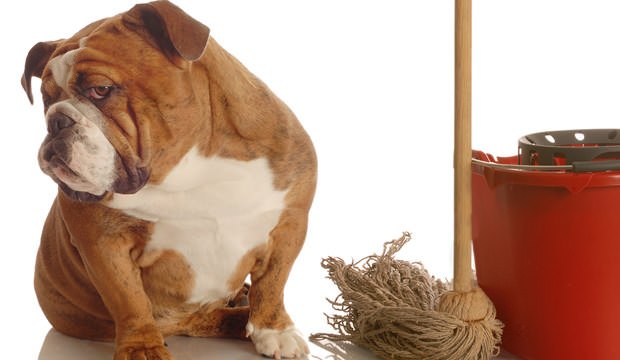
Does your dog chew up your shoes? Slobber on the furniture? Jump all over guests? If so, you know that these behaviors can make living with Fido a lot less enjoyable.
But did you ever think that the annoying behavior could be your fault? It could be. In fact, it probably is.
1. Potty accidents
While some breeds are notoriously hard to housetrain, in all likelihood, that puddle is your fault.
Your job in housetraining is to never give your puppy the chance to have an accident. That means never letting him roam around out of your sight.
You can use baby gates to confine him to one room or attach him to you with a leash. The point is to make it impossible for him to sneak off and find a hiding place to do his business.
And, any time you can’t watch him, he needs to be in a kennel. It doesn’t take much to reinforce bad habits, so the key is to prevent accidents, not to correct your puppy after an accident has happened.
Constant supervision is just the first step, however. Once you see your puppy start going, it’s too late. He doesn’t have the physical ability to stop right in the middle of the action, so to speak. Plan to take him out after every meal and after every play session.
Don’t go more than two hours without giving him a chance to relieve himself. And, if you see him sniffing, take him out immediately, even if you just brought him in. “But, I just brought you in,” means nothing to a puppy who has to go.
2. Chewing
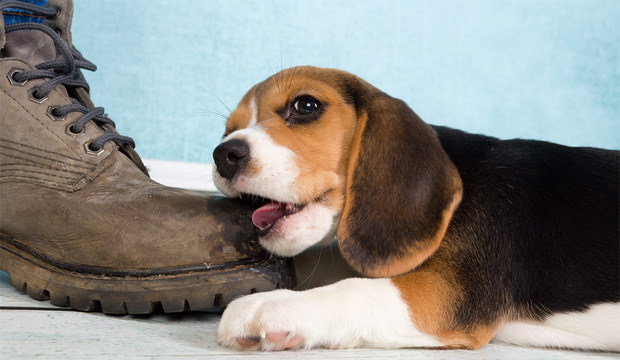
From your dog’s perspective, if it’s on the floor, it’s his. It’s so obvious to us that some things aren’t meant to be chewed that we sometimes fail to see that it’s not so obvious to a dog.
How is he supposed to know the difference between that old slipper you gave him and your $100 running shoes? The trick is to control the environment.
If you’re used to leaving things lying around wherever you happen to drop them, it’s time to grow up and start putting your belongings where they belong. If it’s not meant to be chewed, put it out of reach (and preferably out of sight). After that, make sure Fido has access to plenty of safe chew toys.
Praise him when he chews on them, so he knows that those items are acceptable. If you want to take it one step further, teach him the “release” or “leave it” command, so that you can rescue any items he does manage to find. But never swap food for the object in his mouth; unless, that is, you want to teach him to go find one of your most treasured possessions any time he wants a treat.
3. Nipping

Unfortunately, by the time the mouthing turns into painful nips, you’ve already taught your puppy that he gets lots of attention and playtime by “biting” your hands.
From his perspective, if you start suddenly scolding him for it, you’re changing the rules in the middle of the game. You’ll confuse him and undermine his trust in you.
Ideally, you should never allow your dog to think it’s okay for his teeth to come into contact with human skin. Not only does that mean not allowing your puppy to mouth your hands, it also means not playing with your older dog by trying to wrestle a toy out of his mouth. But that’s not much help if you’ve already done your part to create a bad habit.
In that case, you need to teach your dog that letting his teeth come in contact with your skin means an end to the fun. If your dog nips at you, stop everything. If he’s in your lap, put him on the floor. If you’re playing with a toy, set it out of reach.
Don’t touch him, don’t talk to him, and don’t look at him. As soon as he sits calmly, praise him and play until the next time you feel his teeth. Then stop and do the routine again. It may take a few times, especially if he’s an older dog, but he’ll figure it out.
4. Separation Anxiety
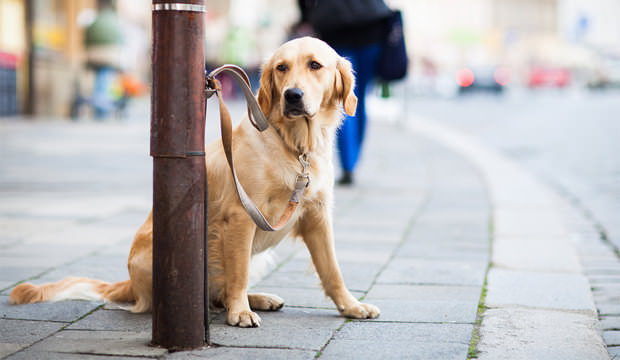
Some dogs have severe separation anxiety. All the misbehavior that takes place while you’re gone is really just his way of dealing with a canine panic attack that’s likely to be at least partly your fault to start with.
What do you do as you’re headed out the door?
Do you give Fido such an effusive goodbye that he feels like something really big is happening, even if you’re just going to the post office?
Dogs are extremely attuned to their owners’ feelings. If you inject a lot of drama into your departure, Fido will definitely take you up on it.
Instead, try being nonchalant. Try not saying goodbye at all. Or, if Fido is following at your heels, just offer a quick pat on the head on your way out. The best way to teach your dog that leaving is no big deal is if you act that way yourself.
There are other things you can do, too. If your dog starts getting anxious the second you pick up your keys, try picking them up on and off all day, then setting them back down without going anywhere.
Eventually, you’ll eliminate your keys as a cue. Another trick is to save a special treat that he’s allowed to have only while you’re gone. But you have to give it to him about 15 minutes or so before you leave. Otherwise, that will become his new cue, and you’ll be creating a new problem.
5. Dominant Behavior
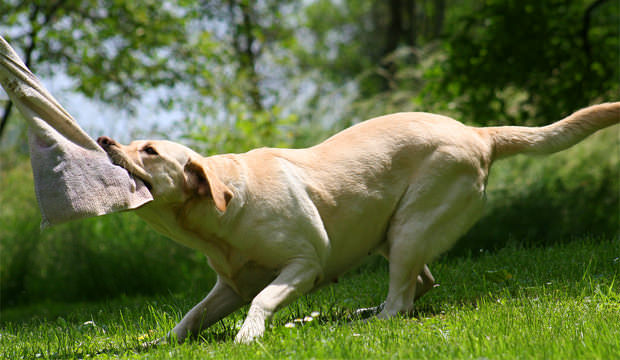
If so, Fido clearly thinks he wears the proverbial pants in the family, and guess where he learned that? That’s right, you taught him!
Dogs are pack animals, and packs have a hierarchy. There’s always a leader (the alpha male, so to speak), and everyone else is submissive to him.
If another dog thinks he should be the leader, they fight it out. And that’s exactly what’s happening here. At some point, probably when Fido was a puppy, you let him believe he was the pack leader. You petted him whenever he looked at you, played with him whenever he asked, fed him on schedule, etc.
Eventually, he concluded that he was the leader and you were the lesser being. Now you have to teach him who the boss really is. You do that by taking control of all resources.
Whether it’s attention, toys, food, or anything else wants, he has to go through you.If he’s being pushy and insistent about wanting attention, completely ignore him until he settles down and uses some manners.
When he’s hungry, teach him to sit to say, “please” before you put his bowl down. You do that by just standing there and ignoring him while he begs, then putting his food down the instant he sits to try and figure out why the rules have changed. Eventually, he’ll get the message and start sitting calmly (if not exactly patiently) every time he wants something. And you’ll be the undisputed new pack leader.
6. Aggression
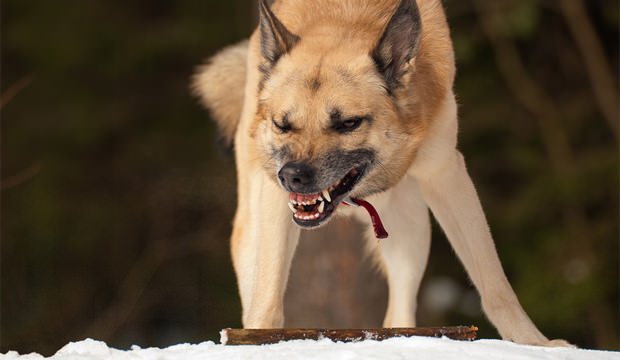
It also feels pretty good to think that your dog wants to protect you, but the problem starts when he decides on his own when you need protecting.
Unfortunately, all the encouragement you gave Fido when he was a puppy led him to think that he gets to decide whose presence is acceptable and whose isn’t.
Now, not only is the UPS guy scared to come to your house, but your family and friends are, too. And what will happen if Fido slips out someday? Are you ready to deal with the ramifications if he bites somebody?
Dogs don’t give up the alpha role easily, so if you’re going to convince your dog that you’re the one who gets to decide who’s allowed on the property, you’re going to have to work to change his thinking. The first step is safety. Be honest with yourself about how likely your dog is to bite. If you’re not 100% certain, invest in a head collar or muzzle.
Once you’ve got the safety angle covered, it’s time to distract your dog with goodies when there are strangers around. In any situation where he would normally show aggression, distract him with some yummy treats. He’ll eventually associate the presence of strangers with good things rather than threats.
7. Barking
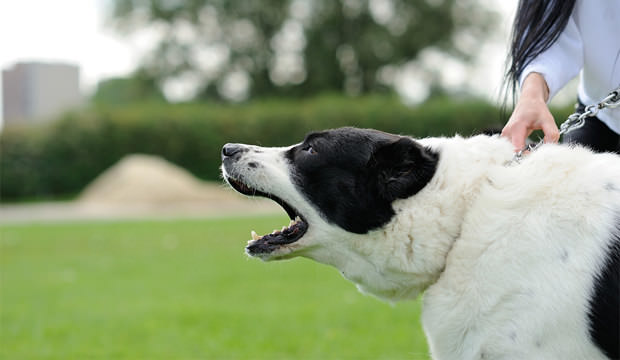
Fido is smarter than you think. Here’s what’s going through his head: “So…if I bark when I’m outside, I get a treat!” You need to change his perception. He needs to associate the treat with being quiet.
Here’s what you do instead. Let your dog out. When he starts barking, go outside, hiding a treat in your hand. Sit down and completely ignore him. When he comes to investigate, he’ll stop barking. Give him the treat, and go back inside. If he starts barking again, go through the same routine.
But what if he sits in a window and barks whenever anyone walks by? The secret to making him stop is to make sure you’re rewarding him for the behavior you want, rather than using rewards to distract him from the behavior you don’t want.
If you offer him a treat to distract him from barking, that’s a reward. Instead, just sit down quietly with a treat in your hand. When he comes to investigate, that’s the time to reward him. Then, he’ll associate the treat with coming to investigate rather than with barking.
8. Jumping Up
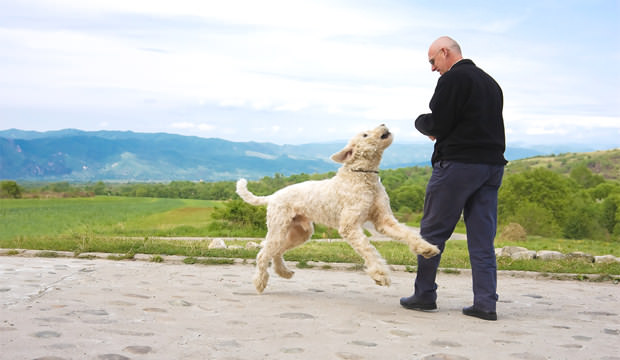
And you may be encouraging this behavior. If you tell Fido to calm down in a sweet voice and inform your guest that, “He just wants to say hello!”, you’re telling your dog that you’re just fine with that behavior.
And why would he stop doing something that so clearly makes you happy?
Your only hope in this scenario is to enlist your guests in Fido’s education. Ask them to bring a few treats (anything that dogs find yummy will work).
Tell them that, when you open the door, their job is to show your dog the treats, then close them up in their fists. Fido will almost certainly jump, whine, and beg, but they’re to do nothing until he sits down to rethink his strategy.
As soon as he sits, they give him the treat. It’s all about psychology. You don’t want to distract him with a treat to get him to stop unwanted behavior. He’ll take that as a reward. Instead, let him know the treat is his for the taking, and give it to him when he’s doing the behavior you want to reward. He’ll soon figure it out and sit to say, “please” whenever guests arrive.
9. Running away when called
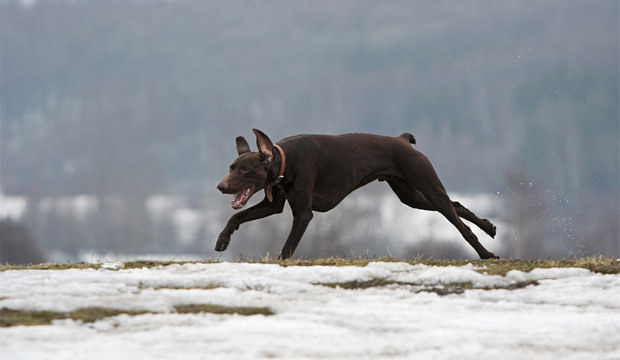
There are so many things to worry about: getting hit by a car, scaring a neighbor, etc.
So what are you doing to encourage your dog to come when called instead of running from you?
It’s actually pretty simple. You call Fido, and Fido ignores you. You chase him, and he runs faster. Finally, you decide to go home and get a treat.
You show your dog the treat, and he comes running. Then, you hide the treat and scold him. What have you just taught him? That coming when you call is a really, really bad idea.
Instead, try teaching your dog before he’s experienced freedom that coming when you call is the best thing that could ever happen to him. Start in a safe environment with a treat in your hand, but make sure he’s doing something he finds really interesting, like chewing on his favorite toy. Show him the treat, and call him by name.
When he comes, give him the treat, and make a huge fuss over him. The goal is to make him think that coming to you is far better than freedom. Practice this over and over until he doesn’t hesitate for a second when you call him.
10. Digging
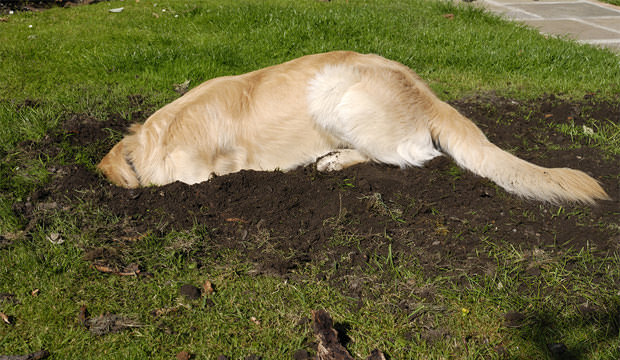
If your dog is digging holes that put a mole to shame, stop and think about whether you’re playing an unintentionally influential role.
This goes back to the root of a lot of dog misbehaviors: rewarding the wrong thing.
Let’s say your dog digs. You catch him in the act and call him to come to you. Having previously reinforced coming when called with a yummy treat, you think you’re rewarding him for coming to you.
But he may be thinking something completely different. Fido may be thinking that you’re rewarding him for digging. That’s why it can be hard to correct the behavior. It’s easier to ward it off from the beginning.
There are a few things you can do other than unintentionally rewarding Fido for digging. At one extreme, only let him out to do his business. Monitor his progress, and bring him in as soon as he’s finished. At the other extreme, set up a digging area by burying several of his favorite toys. This is part of the, “If you can’t beat them, join them,” mentality. Create a specific spot where he is rewarded for digging.
11. Flip-flopped schedule
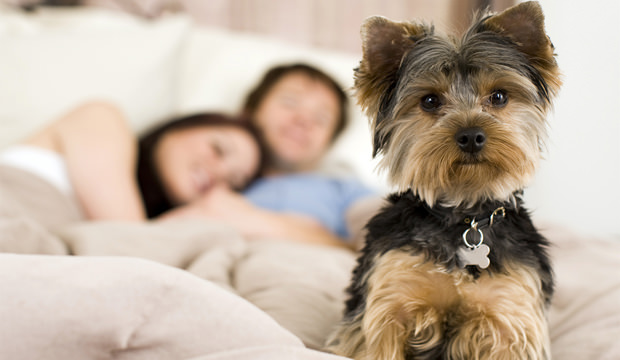
Think about it, though. He can sleep whenever he wants. He doesn’t share your concept of a normal schedule. This bad habit might have started when he was a puppy.
You accepted that he needed to go out at night, and somehow needing to go out morphed into eating, drinking, and playing.
And, the next thing you know, your dog has no respect whatsoever for human schedules. This is one of those times when an ounce of prevention beats a pound of cure.
Yes, puppies need to go out at night. But all they need to do is relieve themselves and maybe get a quick drink of water. They don’t need to eat, and they certainly don’t need to play. Pick your puppy up, carry him outside, and use whatever word you’ve chosen to tell him to do his business.
Then, take him back outside and put him in his sleeping spot. The key is to be extremely boring. Getting up at night should be about going to the bathroom and nothing else. Ignore all pleas to play, even if it means putting a pillow over your head while you try to sleep through the whining.
12. Sibling Rivalry
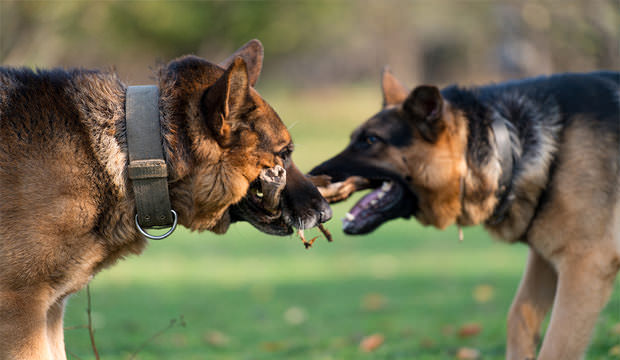
It’s just not reasonable to expect him to concede the throne just because you bring another dog home.
An only dog tends to think he’s the boss, at least when it concerns the canine members of the family.
He’s certainly not expecting an interloper. And, if one shows up, he expects that interloper to assume his lesser position in the world. The problem comes when you fail to anticipate this very normal reaction.
If you expect your resident dog to be thrilled with the newcomer, you’re going to be woefully unprepared to handle the reality. Here’s what’s going to happen: Fido, who’s been with you for years by now, assumes that all he has to do is show the new kid Bowser how the world works.
Bowser, on the other hand, thinks social position is up for grabs. When that happens, fighting is inevitable. Fortunately, even if you didn’t manage to prevent the problem, there are some things you can do to correct it.
The trick is to make both dogs think that being together is the best thing ever. That means reserving some treats and activities for only those times when you’re all together. As long as everyone is playing nicely and being polite, treats are dispensed, and the fun continues.
The instant anybody nips or growls, all of the fun stops. The food goes away, and so do the toys. You play like a statue and stare into space. Only when your two pups are acting civilized again do you resume the afternoon’s festivities.
13. Begging
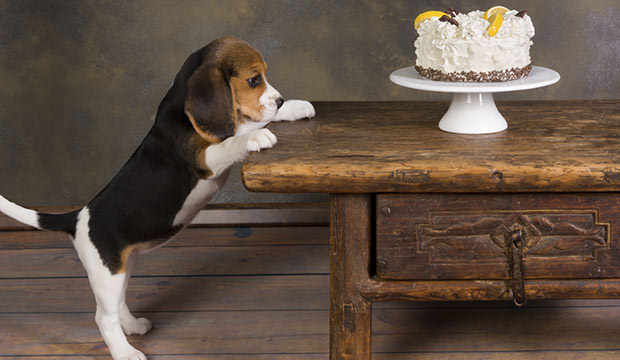
It’s especially annoying – and embarrassing – when guests are present. And, you guessed it again: It’s probably your fault.
The best way to prevent begging is to never let it start in the first place. That means never, ever letting Fido eat food from the table, even food that’s dropped by human munchkins.
For many parents of toddlers, one of the biggest benefits of pet ownership is having a vacuum that comes when you call it, but you have to give that up if you want to prevent begging. After all, Fido doesn’t know the difference between food that’s dropped from pudgy little fingers and food that’s tossed down deliberately.
If you have young children, your best bet is to banish Fido to another room (or to his crate) during meals and snacks. Otherwise, it’s fine to let him stay as long as he isn’t begging. If he starts, remove him from the room. The next day, you can try again, removing him as soon as the whining or pitiful gazes begin. Eventually, he’ll get the message.
Another option is to distract Fido with a favorite toy or treat that you reserve just for family meal times. Used consistently, that tactic will teach him to associate meal times with his favorite toy rather than with the possibility of scoring some table scraps.
14. Stealing
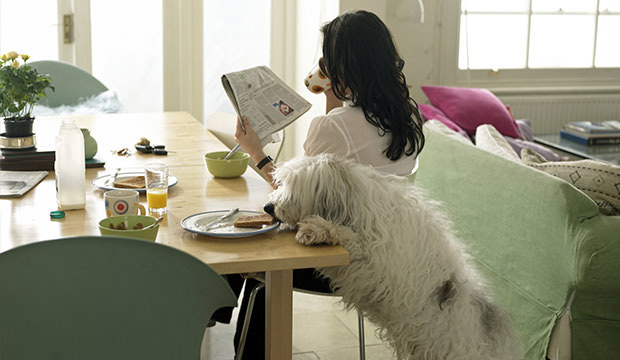
Far too many families can tell you stories about Thanksgiving turkeys that were cooling on the counter or birthday cakes that were waiting for candles…well, let’s just say a lot of families have had to resort to “Plan B” (and a lot of dogs have had to make emergency visits to the vet).
Whether stealing food means snatching a chicken nugget right out of your toddler’s hand or stealing the steak off of your plate when you leave to answer the doorbell, it’s a hard habit to break. But Fido can’t do it if you don’t give him the opportunity. That’s why prevention is the best cure.
Fido should always have adult supervision when food is on the table (or anywhere else within his reach). He should also be occupied with a toy or treat that he only gets during meals.
If supervision isn’t possible, restraint is a must. Fido can go outside, in his crate, in another room, or on a leash. Just don’t give him the opportunity to discover the joys of stealing food. A little prevention is the best way to keep an honest dog honest!
15. Pulling
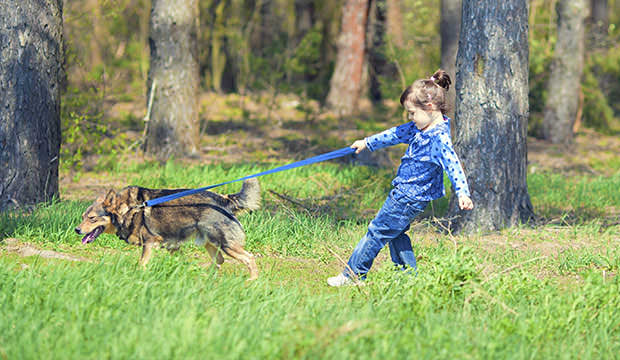
The problem is obvious if Fido is a large breed. If he’s a tempest in a teacup, his pulling may look cute. But you’re still allowing him to think that he’s the boss.
Whether he wants to chase a squirrel, terrorize the neighbor’s cat, or sniff a mailbox, he thinks his agenda takes priority. It’s your job to teach him otherwise.
As with most things canine, it’s more effective to reward the positive than it is to punish the negative.
When Fido starts pulling, stop in your tracks. Don’t look at him, don’t talk to him, don’t do anything until he has turned toward you and is giving you his full attention. Once that happens, start walking. If possible, lead him to where he wanted to go; just make sure that you’re the one determining the course.
If he wanted to go somewhere or do something inappropriate, just start walking again. The most important thing to remember is that the walk should get very, very boring as soon as Fido pulls. The fun only starts back up when he stops pulling and gives you his attention.
16. Car Sickness
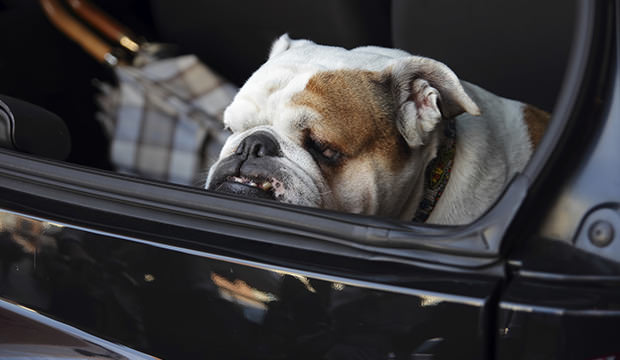
And his anxiety leads to your anxiety, because having Fido throw up all over your car can take all of the fun out of doggy trips. Fortunately, there are behavioral solutions to the problem.
Fido doesn’t enjoy feeling sick and throwing up any more than you do, so the first step is to create more pleasant associations.
One way to do that is by loading him into your parked car and giving him a special treat or toy. Don’t go anywhere this first time; just hang out in the driveway and let him get used to being in a car that’s not moving.
The next day, try it again – but, this time, drive around the block. If Fido tolerates it without getting sick, do it again the next day. If not, go back to sitting in the driveway for a few days.
Once Fido can tolerate driving around the block, extend the trip a bit. And don’t forget the favorite toy or treat! Your job is to create pleasant associations. Once you’ve successfully completed a five-minute trip, try a ten-minute trip. Gradually increase the time until Fido can successfully complete a trip of the desired length.
17. Predatory Behavior
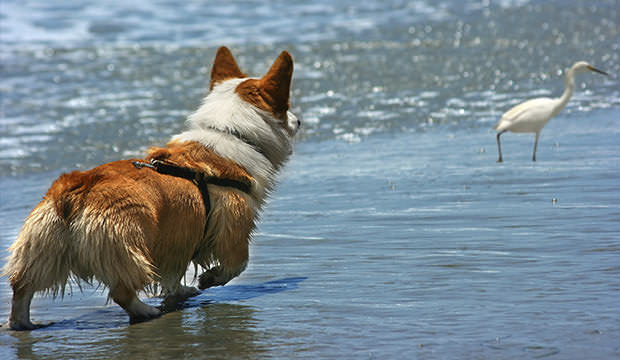
When dogs are purchased as companions, however, those predatory instincts can present a problem.
Predatory instincts can focus on some very unfortunate victims: babies and other small children; cats; hamsters, gerbils, and other rodents kept as pets; squirrels, birds, and other small animals; wild animals that can be dangerous to pet dogs (like porcupines and raccoons); and, finally, cars.
Dogs’ predatory instincts tend to be stimulated by sight, sound, and smell. Small, rapidly moving animals are especially likely to be seen as prey (unfortunately, that can include babies). Unfortunately, a dog that injures a neighborhood pet or child may have to be euthanized. And dogs can be severely injured by inappropriate “prey” like raccoons and cars.
There are a few things you can do to curb predatory behavior. As always, prevention is the best cure. If your dog has shown predatory behavior, keep him on a leash or in a fenced yard. Next, teach Fido to reliably come when called. The best way to do this is by giving him a treat every time he comes to you.
Finally, reward him for ignoring prey. With Fido on a leash, go for a walk in a place where he usually spots his preferred “prey”. As soon as he spots his prey, stop moving and ignore him. Keep ignoring him until he turns to look at you; then, offer him a treat. By doing this consistently, you can teach him that he gets rewarded for ignoring prey.
18. Submissive Urination
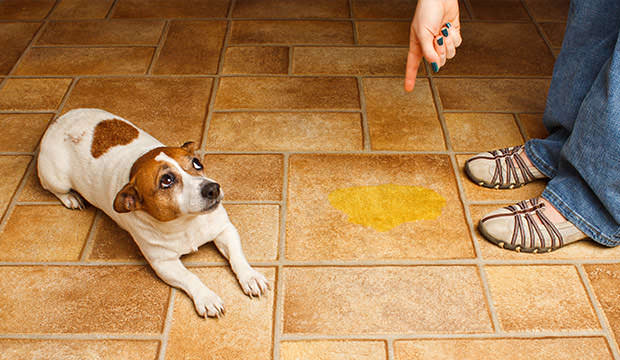
In this case, urination is a submissive behavior that’s usually accompanied by other submissive behaviors like squinting, grinning, cowering, tucking the tail, or lowering the front paws.
While this is much more of an instinctive behavior than deliberate disobedience, there are still things you can do to prevent it.
First, try greeting Fidette outside. Even if she stays inside during the day, you can open the door and let her out rather than going inside to greet her. It won’t stop the submissive urination, but it makes it less of a problem.
If you can’t greet Fidette outside, ignore her when you first walk in. Let her get her excitement out of the way before you bend to greet her. Greeting her when she’s calm reduces the risk of submissive urination.
When you do give her your attention, pet her on the chin or chest, instead of on the head. Accepting a touch on the head is, in itself, a submissive behavior. If all else fails, distract her with treats.
Store treats in your car or in another convenient place. As soon as Fidette starts running toward you, toss her some treats. Stopping to eat the treats will help break the pattern of submissive behavior.
19. Eating Stool
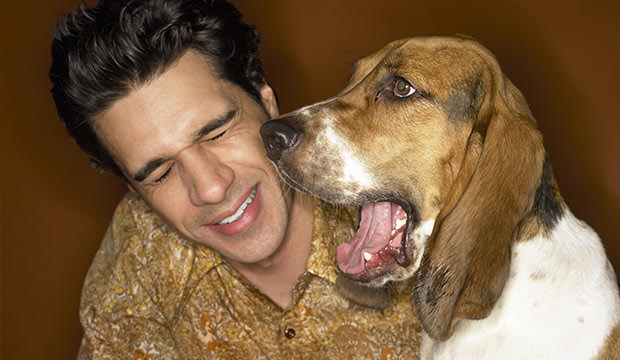
As yucky as it is, eating poop is sometimes normal. Mama dogs lick their puppies to stimulate them and eat the poop to keep the nests clean.
And puppies sometimes eat each other’s poop, but they usually outgrow it.
But what happens if they don’t? Nobody wants to greet their dog, only to smell poop breath. Fortunately, there are things you can do to keep Fido from eating stool (the technical term is “coprophagia”).
First, make sure Fido is properly nourished. Some professionals believe that dogs eat stool to recoup nutrients they’re not getting from their regular diets. Second, focus on prevention.
If possible, separate the elimination area from the play area. Let Fido access the elimination area for that purpose only; when it’s play time, keep him out. If that’s not possible, pick up poop as soon as it happens. Finally, keep baby diapers and soiled baby clothes out of reach.
If prevention doesn’t work, the next best option is to distract your dog before he has a chance to eat stool. Obviously, this requires close supervision. As soon as you see Fido sniffing poop, command him to leave it or call him to come to you.
20. Marking
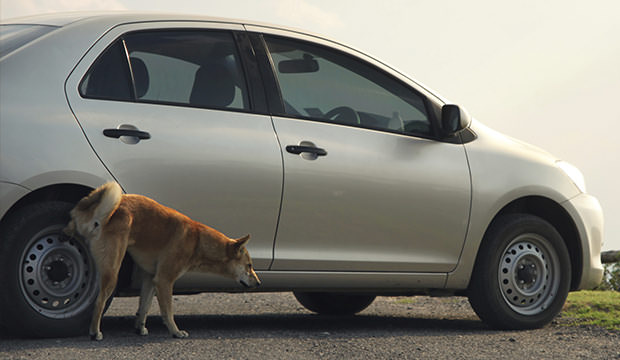
The problem occurs when he does it in a house – yours or someone else’s – or when he does it on something that belongs to another person, like a suitcase or (nightmare!) a leg.
Dogs gain an incredible amount of information from marking. For instance, just by sniffing a previous dog’s marking, your dog can tell whether the other dog is male or female, whether it’s intact or spayed/neutered, and, if it’s an intact female, whether it’s in heat.
Sometimes dogs mark in an attempt to communicate or just to say, “I was here”…kind of like graffiti. Other dogs “overmark,” – which means urinating on the same spot another dog has previously marked – as a way to assert dominance.
Both male and female dogs urine mark. Females may even lift a hind leg – or both hind legs! Dogs who are intact are more likely to mark than dogs who have been spayed or neutered.
Regardless of why your dog is marking, there are things you can do both to prevent it and to modify your dog’s behavior. Here are some things you can do to deter a problem marker:
First, spay or neuter intact dogs. This can reduce marking by up to 60 percent. Next, limit the scent of other dogs in your home. Leaving your shoes outside the door or putting them otherwise out of reach will prevent your dog from overmarking a rival’s scent. The same is true for visitors’ suitcases, especially if they have dogs at home.
Another option is to train your dog to mark a certain spot. Expose him to a spot another dog has marked; then immediately take him to an acceptable spot, like a tree or mailbox on your own property. If he marks the right spot, praise him and reward him with a treat.

Beagles don’t misbehave ….. their owners do.
Dogs r the best
Pitbulls are the best dogs they are very kind its the owners that give them bad names